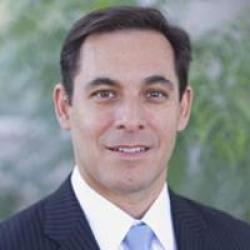Minimally invasive approach speeds healing time
Dr. Tumialán specializes in minimally invasive microdiscectomy, an operation that uses special instruments and an operating microscope to remove the herniated, or bulging, portion of a disc. In this procedure, the neurosurgeon makes a small incision – only 16-millimeters in length – immediately over the L5-S1 disc space. After removal of a small amount of bone, the surgeon identifies the nerve root and holds it safely out of the way to remove the herniation that is causing pain. Watch a video about minimally invasive spine surgery.
Research driving innovations in spine care
In addition to neurosurgery, Dr. Tumialán is instrumental in the Neurologic and Spine Research Program at the HonorHealth Research Institute. Launched in 2015, the institute partners with physicians throughout the Valley and with organizations nationwide to study the most serious health challenges.
At HonorHealth, he is involved in a broad range of neurological and spine clinical trials, including disorders of the spine and spinal cord injury. Clinical trials are also being conducted on ALS (Lou Gehrig’s disease), dementia (including Alzheimer’s disease), multiple sclerosis, myositis, stroke and traumatic brain injury.
Dr. Tumialán also participates in research with members from more than 80 surgical centers who submit data to a nationwide database to track trends, cost effectiveness and surgical outcomes. The ultimate goal? Bring down healthcare costs.
"With specialized instruments, we can accomplish the same goal as an open spine surgery," Dr. Tumialán said. The operation is efficient – 45 minutes to an hour – and the recovery is fast. In fact, Paul was up and walking without pain within an hour of the operation.
In comparison to open spine surgery, Dr. Tumialán equates minimally invasive spinal surgery to "building a ship in a bottle." Currently, only 30% of spine surgeries are done minimally invasively, but Dr. Tumialán expects that number to increase.
Choose the right care team
"The surgery went great," Paul said. "The preparation by Dr. Tumialán before and after the operation was thorough and precise. He was so confident in his presentation. I knew I had made the right choice with the right doctor. Having confidence in him was a big thing for me."
Dr. Tumialán knows that partnering with the patient is essential. "That's why I spend time explaining what they can expect, what team members are involved – the anesthesiologist, the OR nurse – and what happens after the operation," he said. "I use illustrations and demonstrations to show what will happen and why."
Physical therapy and rehabilitation are key to recovery
As with any operation, spine surgery requires the patient's commitment to rehabilitation. The first two months after surgery are critical. "For the first 30 days, you can't lift anything more than five pounds, and the second month nothing more than 25 pounds," Paul said. "But I stuck to that because I was motivated! I had a two-week trip to Italy planned in a few months, and I was going to do a lot of walking. I wanted to be pain free."
Without dedication to following the recovery plan, the patient risks herniating the disc again, Dr. Tumialán said. "And that happens in about 10% of cases."
In Paul's case, the whole process went smoothly, from the physical therapy preparation before the operation to the microdiscectomy itself to the rehabilitation after surgery. Paul not only recovered in time for his trip to Italy, but he was able to enjoy his tour without back and leg pain.

